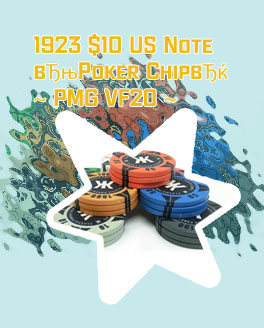|
When hosting a poker game with a 20 dollar buy-in, it is important to ensure that you have enough poker chips for all players and that the chip distribution is fair and balanced. To help you navigate these considerations, we have curated a list of two articles that offer valuable insights into managing poker chips effectively in a 20 dollar buy-in game.
How to distribute poker chips for a 20 dollar buy-in game

Today, we are joined by poker expert John, who will be sharing his insights on how to distribute poker chips for a 20 dollar buy-in game.
John, can you walk us through the ideal chip distribution for a game with a 20 dollar buy-in?
Sure! For a 20 dollar buy-in game, I recommend using a total of 500 poker chips. You can distribute them as follows: 150 chips worth When hosting a poker game with a 20 dollar buy-in, it is important to ensure that you have enough poker chips for all players and that the chip distribution is fair and balanced. To help you navigate these considerations, we have curated a list of two articles that offer valuable insights into managing poker chips effectively in a 20 dollar buy-in game.
, 100 chips worth
Keep track of your opponents' stacks: Pay attention to your opponents' stack sizes and adjust your strategy accordingly. If you notice a player with a short stack, you can apply pressure to force them to make tough decisions. Conversely, if you're facing an opponent with a big stack, tread carefully and avoid getting involved in big pots unnecessarily.
, and 50 chips worth . This breakdown will allow for a good balance of smaller and larger denomination chips, giving players the flexibility to make a variety of bets throughout the game.
That sounds like a well-thought-out distribution. Can you explain why this particular breakdown is important?
Absolutely. Having a mix of chip denominations ensures that players can make bets of different sizes, creating more strategic gameplay. Additionally, having a good distribution of chips helps to keep the game flowing smoothly and prevents any disruptions due to a lack of certain denominations.
Thank you, John, for sharing your expertise on chip distribution for a 20 dollar buy-in game. Your insights will surely help players organize their games more effectively.
Tips for managing poker chip stacks in small buy-in games
In small buy-in poker games, managing your chip stack effectively is crucial to your success at the table. With limited resources on hand, it's important to make strategic decisions to maximize your chances of winning. Here are some tips to help you navigate your way through these games:
-
Understand the significance of stack sizes: In small buy-in games, your chip stack is your most valuable asset. Knowing how to leverage your stack size to your advantage is key. Whether you're looking to build a big stack early on or play conservatively to survive until the later stages, being aware of your stack size relative to your opponents is essential.
-
Make use of stack preservation strategies: In games where the buy-ins are small, it's important to preserve your chip stack and avoid unnecessary risks. This means being selective with your starting hands, avoiding speculative plays, and not committing too many chips without a strong hand.
-
Keep track of your opponents' stacks: Pay attention to your opponents' stack sizes and adjust your strategy accordingly. If you notice a player with a short stack, you can apply pressure to force them to make tough decisions. Conversely, if you're facing an opponent with a big stack, tread carefully and avoid getting involved in big pots unnecessarily.
|

